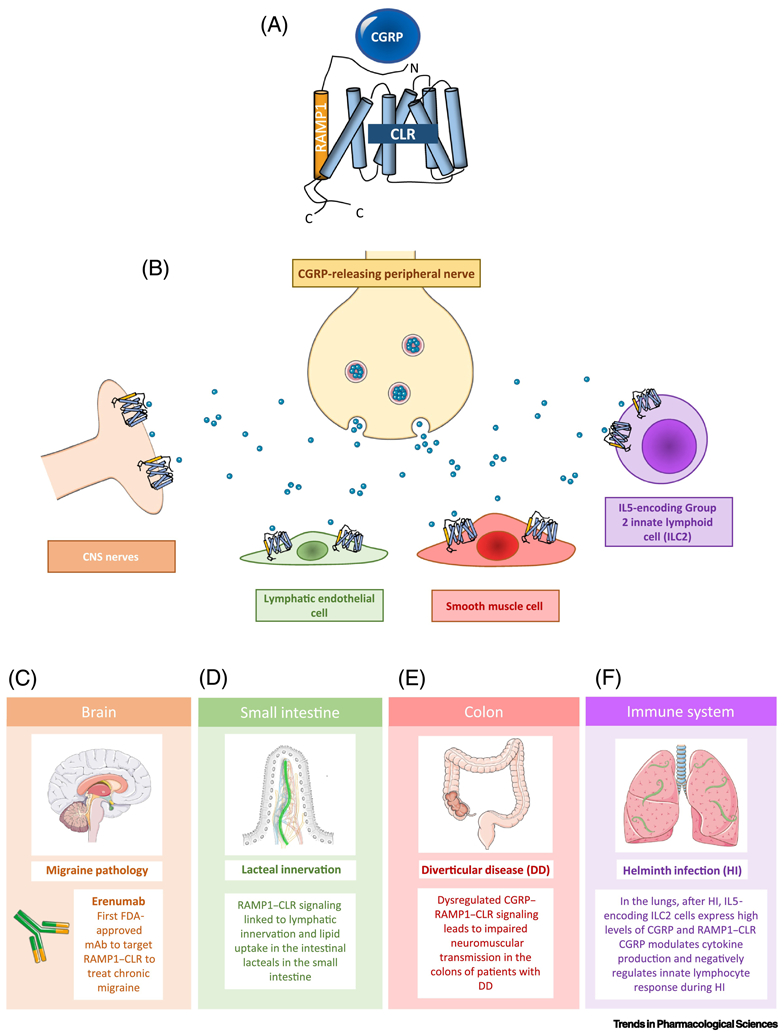Figure 1: Role of RAMP1-CLR in disease.

(A) Graphical representation of the CGRP receptor components CLR and RAMP1. (B) Schematic depicting release of CGRP from peripheral nerves and its potential targets including lymphatic endothelial cells, CNS nerves, and smooth muscle cells. (C) CGRP can also stimulate CNS nerves, and other cell types in the CNS, to incite migraines. Erenumab, the first FDA-approved monoclonal antibody against a GPCR, targets the RAMP1-CLR receptor to help treat migraine. (D) CGRP can bind to its receptor on lymphatic endothelial cells, which is linked to lacteal innervation and lipid uptake in the small intestine. (E) CGRP can also bind to receptors on smooth muscle cells, which can have physiological effects in the colon. Human studies have shown dysregulation of CGRP signaling in patients with diverticulitis disease (DD), highlighting the importance of this signaling axis in human disease. (F) CGRP is specifically upregulated in a distinct population of Type 2 Innate Lymphoid Cells found in the lungs in response to specific cytokine cues released by lung-infiltrated N. brasiliensis worms during helminth infection and constrains the magnitude of the innate immune response.
